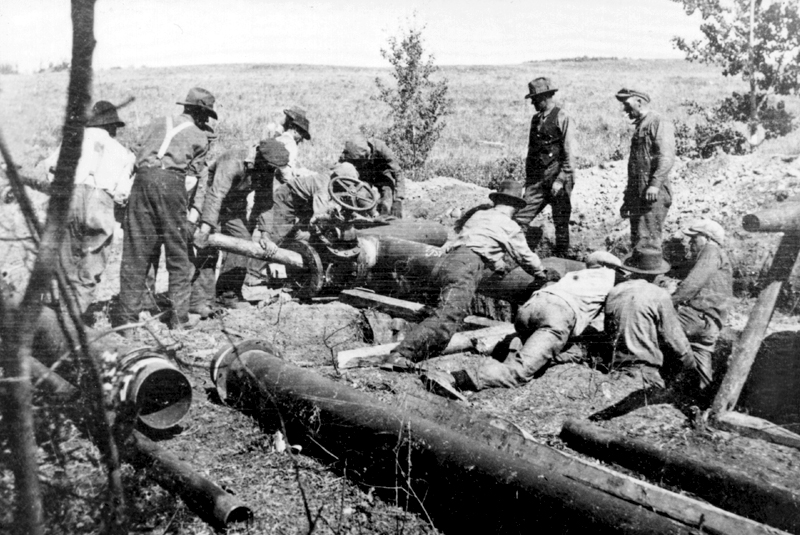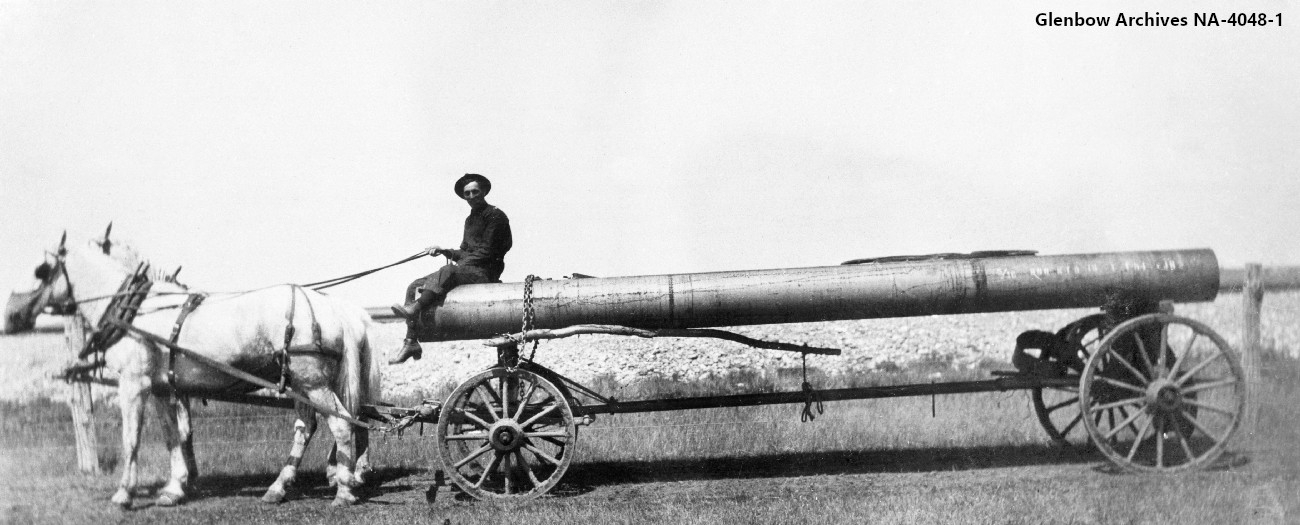In April 1912, construction began on the Bow Island
Alberta - April 23, 2017Today, Alberta’s oil and gas pipelines stretch over 422 000 kilometres across the province, but this wasn’t always the case. Over a century ago, Alberta’s first natural gas pipeline broke ground at the Bow Island No. 1 well site, forever changing the way residents kept warm in their homes.

Dubbed “Old Glory” by the drilling crew that discovered it in 1909, Bow Island No. 1 was the largest gas well in Canada at the time. It also became Alberta’s first large natural gas production field. Given Bow Island’s sizeable development, it was only a matter of time before another “first” hit the province: a gas pipeline.
Construction of a 16-inch, 270-kilometre pipeline to Lethbridge and Calgary began on April 22, 1912, and was completed in just 86 days. Labour crews used nothing but their muscles to lay down pipe and build it by hand; relying on innovations such as trucks, roads, and earthmoving machinery wasn’t an option back then.
The Bow Island pipeline delivered gas to Lethbridge on July 12 and to Calgary less than a week later. Over 12 000 Calgarians—more than a quarter of the city’s 44 000 residents—made a point of attending the pipeline’s opening ceremony and inaugural flare lighting. Beyond the spectacle, natural gas later replaced coal gas as a heating, lighting, and cooking fuel in many Alberta homes.
Regulation Matters
Constructing the Bow Island pipeline seemed straightforward at the time: a pipeline was needed, and so one was built. Because the regulator didn’t exist until 1938, there were no rules or safety requirements to adhere to. But when a company wants to build a pipeline today, it’s not quite so easy—and for good reason.
We now recognize that safety and environmental risks can arise when there is no policy, assessment, regular inspections, or enforcement action in place. Today’s pipelines are more thoroughly regulated; a number of Alberta Energy Regulator (AER) requirements plus the Responsible Energy Development Act, Pipeline Act, and Pipeline Rules ensure procedures are followed and pipelines are safe.
And as the number of pipelines continues to grow, so do Albertans’ concerns for safe and responsible energy development. In February, the AER launched its first public report on industry performance, with a focus on pipelines, in an effort to increase transparency and to hold operators accountable.
Kara MacInnes, Writer


